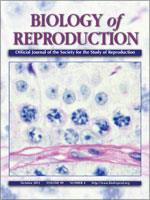The oviduct serves as a site for the fertilization of the ovum and the transport of the conceptus down to the uterus for implantation. In this study, we investigated the presence of adrenomedullin (ADM) and its receptor component proteins in the pig oviduct. The effect of ADM on oviductal secretion, the specific receptor, and the mechanisms involved were also investigated. The presence of ADM and its receptor component proteins in the pig oviduct were confirmed using immunostaining. Short-circuit current (Isc) technique was employed to study chloride ion secretion in the oviductal epithelium. ADM increased Isc through cAMP- and calcium-activated chloride channels, and this effect could be inhibited by the CGRP receptor antagonist, hCGRP8-37. In contrast, the nitric oxide synthase inhibitor, l-NG-nitroarginine methyl ester (l-NAME), could not block the effect of ADM on Isc. In summary, ADM may increase oviductal fluid secretion via chloride secretion independent of the nitric oxide pathway for the transport of sperm and the conceptus.
How to translate text using browser tools
21 August 2013
Adrenomedullin Increased the Short-Circuit Current in the Pig Oviduct Through Chloride Channels via the CGRP Receptor: Mediation by cAMP and Calcium Ions But Not by Nitric Oxide
S.B. Liao,
K.H. Cheung,
M.P.L. Cheung,
Y.T. To,
W.S. O,
F. Tang
ACCESS THE FULL ARTICLE

Biology of Reproduction
Vol. 89 • No. 4
October 2013
Vol. 89 • No. 4
October 2013
adrenal medulla
calcium
chloride channel
cyclic adenosine monophosphate (cAMP)
ion channels
nitric oxide pathway
oviduct




